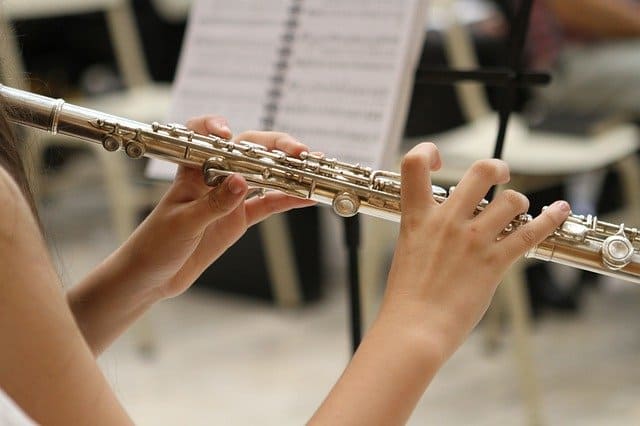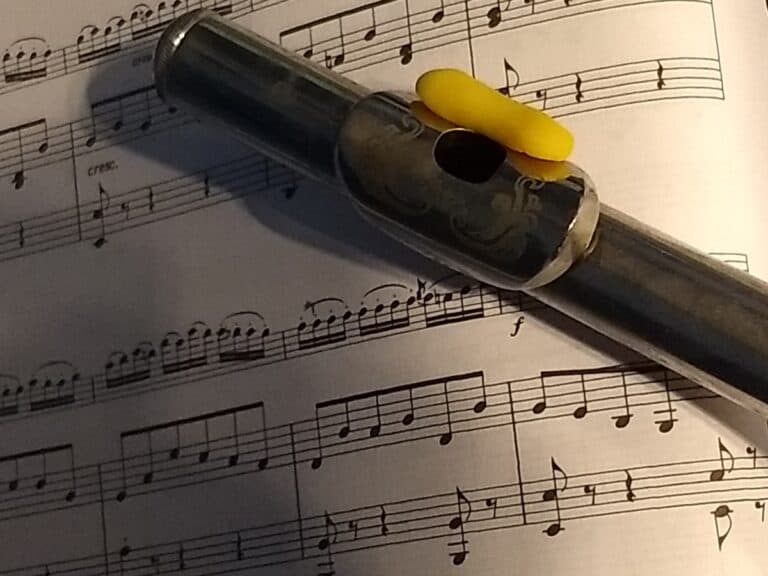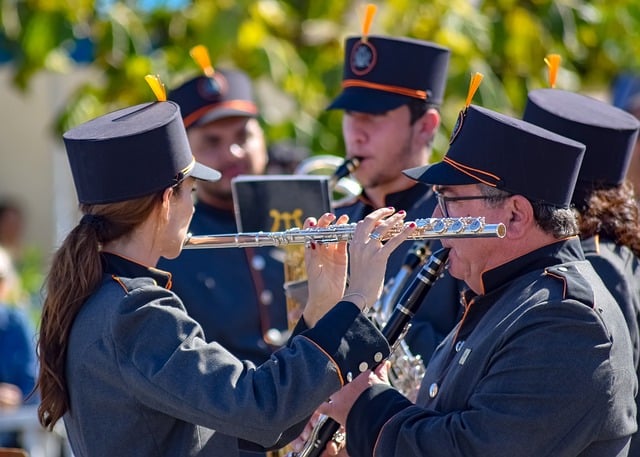How Long Does It Take to Learn Flute?
One of the most common questions that new flutists ask relates to the time commitment that learning flute will take them. In other words, they want to know how long it will take them to learn flute.
Typically, it takes an absolute beginner about a week or two to learn to produce their first sound on the flute. This assumes good instruction and 30 minutes of practice per day. It will take an additional few months to learn the other basics, such as octave changes, fingerings, and scales. Beyond this, you can expect to play full pieces within a year.
There are a few caveats to this answer. First, it is actually impossible for me to tell you exactly how long it will take to learn the flute, since some people have better instruction than others, put in more practice, or are simply more talented. If you are planning on learning the flute, the best thing that you can do for yourself is focus on enjoying the process of learning, rather than on the end goal of being able to play the flute.
So, with all that being said, here’s a rough timeline of the first year of playing flute:
| Time | Milestone | Type of Practice Required |
| 0 – 4 Weeks | First sound | Only practice on the headjoint, and play long tones |
| 2 – 3 Months | Basic harmonic exercises and fingerings; able to play simple scales and melodies | Start each practice session by first using the headjoint, then gradually introducing the rest of the flute. Practice harmonics to develop control of octave changes. Practice fingerings. |
| 4 – 6 Months | Able to play all 12 major scales and basic pieces of music | Use a metronome to practice scales. Continue harmonics and long tones and play some simple pieces. |
| 7 Months – 1 Year | Able to play full pieces | Continue practicing long tones, harmonics, and scales, but also try learning full pieces of music |
So, if your goal is to be able to play some reasonably challenging pieces (at least, challenging enough for someone to hear you and recognize that you are a capable flutist), then you’re probably looking at a year’s worth (at most) of practice.
This can, of course, vary depending on the quality of instruction you receive, the practice that you put in, your talent, and your specific goals. In general, however, you can expect a year of being in the “beginner phase” before you start to sound good.
Bear in mind that even after the first year you will still be far from achieving mastery. You will, however, be able to play flute and sound reasonably good.
If you have other goals, such as being able to play by ear, then you should know that playing by ear is a separate goal which will take an additional few months to become reasonably good at. It also requires a different kind of practice than simply practicing the flute and learning pieces off of sheet music.
The first 4 weeks
During the first few weeks that you are first playing flute, you might not be able to get a sound out. This is perfectly normal for beginners, since it takes time to become accustomed to a new kind of instrument.
This also happens to be the most critical point to receive quality instruction. Without some kind of teacher (even if you are learning off of online videos), you can get stuck being unable to produce a sound indefinitely. It isn’t obvious how one is supposed to produce a sound on the flute, so you need to make sure that you have someone (or something) to teach you.
A real teacher is probably the best option during this phase, since they can give you active feedback and explain to you what you are doing wrong. If you are failing to produce a sound, then there is generally a specific reason for that. Your teacher can help you identify and correct the specific reason.
While you are still in the “trying to produce a sound” phase, you probably won’t even bother putting together the entire flute. Practice will instead focus specifically on the head joint, and will focus specifically on learning how to produce a sound. After you’ve learned to produce a sound, you can expect to work on learning to change octaves, which may still involve practicing on only the head joint.
You’ll specifically be practicing long tones, which are simply notes that you hold for a long time. Though this can seem tedious, this is one of the most important exercises for most instruments.
The key here is to practice regularly, keep your practice limited to the head joint, and to gain some kind of instruction as to what you should be doing with your lips as you play. If you do those things, then you should have no trouble learning how to produce your first sound. Once you are able to produce a consistent sound, you’ve already gotten over the hurdle which stops most people from learning the flute.
Don’t be discouraged by the four week time frame I set on producing the first sound. I think that most people with regular practice and proper instruction will learn to produce a sound within four weeks, but it is by no means unheard of for people to be able to produce a sound on their first day, or shortly after.
2 – 3 months
Provided that you get over the hurdle of producing your first sound, you can expect another two months to be spent on learning the basic fingerings, scales, and practicing harmonics (which will allow you to jump between octaves more easily).
By the end of your third month playing, you should be able to play some simple melodies (such as Mary Had a Little Lamb, for instance), and should be comfortable playing some simple scales and jumping between octaves in the middle range of the instrument.
When practicing, you may want to continue playing on just the head joint at the start of each practice session. Producing your first sound is by no means the end of tone development, and practicing on just the head joint will help you better develop your sound. As you play on the head joint, try narrowing the aperture of your lips in order to cause the pitch to sound up an octave. This is a basic harmonics exercise, and it will help you develop better control of the instrument.
Make sure at this point that you are also practicing with the entire flute. You can do harmonics exercises on the full flute by using one fingering and jumping between octaves on that fingering.
Scales are also important at this point. Make sure that you learn to play in C major, as well as some other common keys such as F major, Bb major, G major, and D major. Eventually, you will want to be able to play in all 12 major keys, and being able to do so is an important milestone for playing any instrument.
Of course, also make sure that you’re playing a few simple tunes at this point. You probably won’t want to tackle any full pieces quite yet, but it is nice to be able to play something recognizable as a reward for your effort.
4 – 6 months
This is the point where you will finally be able to start playing some simple pieces, preferably with piano accompaniment if you are able to do so. You’ll also want to start working on any of the scales that you passed up during your first three months. Some of the scales with complex key signatures can be more challenging, but you will find yourself able to play with much greater dexterity if you master them.
In order to better ensure that you’ve mastered your scales, you may want to practice them with a metronome. This will allow you to play quickly across fast passages, which is an ability that every good flutist must have.
You will probably be reasonably good at harmonics by this point, and will be able to start extending your range into the multiple-ledger-line high notes. You can keep practicing harmonics to maintain and continue improving this ability.
Since you will be playing actual pieces of music at this point, you will probably want to start paying attention to the intonation of your instrument if you are not already. Play long tones with a tuner, and make sure that you are making adjustments if you deviate too far from where the pitch should be.
7 months – 1 year
By the time that you’ve been playing for a year, you’ll probably be able to play moderately challenging pieces. Playing pieces at this point should be one of the main focuses, and you’ll want to make sure that you are gradually ramping up the difficulty of the pieces that you are playing.
Even so, make sure that you don’t slack off on your scales, harmonics, and long tones. There is always room for improvement in those areas.
At this point, I would certainly say that you’ve “learned” the flute, though there is always room for more improvement. Just keep in mind that mastering an instrument can take a lifetime, and if you really want to learn an instrument then it is best to make music a life-long endeavor.







